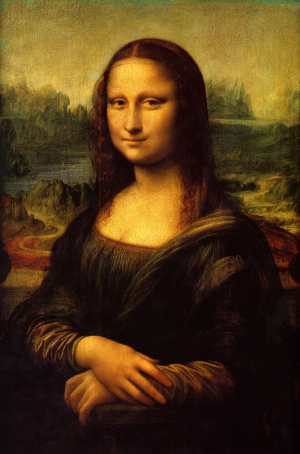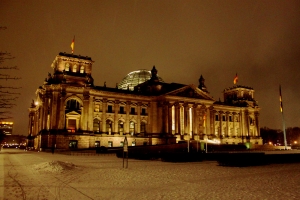|
Displaying items by tag: art historian

The Museum of Modern Art announces the launch of Picasso: The Making of Cubism 1912–1914, the Museum’s first digital-only publication and the first monographic e-book to be authorized by the Estate of Pablo Picasso. Edited by Anne Umland, The Blanchette Hooker Rockefeller Curator of Painting and Sculpture, MoMA, and Blair Hartzell, independent art historian and curator, it embraces the innovative features and infinite real estate of the digital format in order to present new scholarship on a breakthrough moment in the history of Cubism and twentieth-century art. Scott Gerson, private art conservator and former Associate Conservator, MoMA, served as conservation editor on this cross-disciplinary project, which presents in-depth studies of 15 objects made by Picasso between 1912 and 1914. Contributing scholars include Elizabeth Cowling, Professor Emeritus and Honorary Fellow, History of Art, The University of Edinburgh; Jeremy Melius, Assistant Professor, Department of Art and Art History, Tufts University; and Jeffrey Weiss, Adjunct Professor, Institute of Fine Arts, New York University, and Senior Curator, Solomon R. Guggenheim Museum.

Thomas P. Campbell, Director and CEO of The Metropolitan Museum of Art, announced the two appointees who will inaugurate new curatorships within the Department of Modern and Contemporary Art. Both positions were established this spring through a generous gift from Daniel Brodsky, the Museum’s Chairman, and his wife Estrellita B. Brodsky, an art historian and specialist in Latin American art.
Iria Candela will become the Estrellita B. Brodsky Curator of Latin American Art in the fall, focusing on the art of 20th- and 21st-century Mexico, Central America, the Caribbean, and South America. And Beatrice Galilee, the new Daniel Brodsky Associate Curator of Architecture and Design, began working at the Museum in late April. Both will work closely with the modern and contemporary curatorial team, under the leadership of Sheena Wagstaff, the Museum’s Leonard A. Lauder Chairman of Modern and Contemporary Art, on researching and developing the collection and devising the program for both the main building and the Marcel Breuer-designed building that the Met will occupy once the Whitney Museum moves downtown in 2015.
Sandra and Bram Dijkstra have given the Huntington its first two paintings by African-Americans: Charles White’s Soldier (1944) and Robert Duncanson’s Landscape with Ruin (c. 1853). This is a coup for the Huntington as the paintings had been on loan to the San Diego Museum of Art. Bram Dijkstra is an art historian who long taught at UC San Diego.
Chicago-born Charles White lived in L.A. for most of his career. Soldier is a relatively early work, made about when the artist was drafted at age 26. It was made the year after White’s most famous work, the Hampton University mural of The Contribution of the Negro to Democracy in America.

The New York Botanical Garden announces its major 2015 exhibition, Frida Kahlo's Garden, focusing on the iconic artist's engagement with nature in her native country of Mexico. Opening on May 16, 2015, and remaining on view through November 1, 2015, the exhibition will be the first solo presentation of Kahlo's work in New York City in more than 25 years, and the first exhibition to focus exclusively on her intense interest in the botanical world.
Visitors to the Enid A. Haupt Conservatory will walk through a stunning flowershow re-imagining Kahlo's studio and garden at Casa Azul ("Blue House") in Coyoacán, Mexico City. Curated by distinguished art historian and specialist in Mexican art Adriana Zavala, Ph.D., the multifaceted exhibition will include a rare display of more than a dozen original Kahlo paintings and drawings on view in the LuEsther T. Mertz Library's Rondina and LoFaro Gallery at the Garden. Accompanying events invite visitors to learn about Kahlo's Mexico in a new way through poetry, lectures, themed events, tours, a Mexican food market, and an iPhone app.
The art critic Robert Hughes described Goya's Disasters of War etchings as the greatest anti-war manifesto in the history of art. It is fitting, then, that as the world prepares to mark the 70th anniversary of the D-day landings and 100 years since the start of the 1914-18 war, 15 of these Goya prints will form the centrepiece of a powerful exhibition opening on Wednesday at the Louvre's outpost in Lens, a depressed former mining town flattened in the bombings of the first world war.
The exhibition's curator, the art historian Laurence Bertrand Dorléac, claims, however, that The Disasters of War: 1800 to 2014 is not pacifist.
An oil painting bought for a mere €150 (£120) from a dusty antiques shop in northeastern Spain 26 years ago has been discovered to be the earliest surrealist work by Salvador Dali, art experts confirmed on Thursday.
The colourful scene - depicting angels swirling in the sky around a womblike cloud formation above a flaming volcano - caught the eye of Tomeu L'Amo, a young art historian as he browsed canvases in a cluttered antique shop in the city of Girona, northeastern Spain in 1988.
He suspected it may have been an early work by Catalan artist Salvador Dali but the shopkeeper insisted that was impossible as it bore an inscription with the date 1896, eight years before Dali was born.

Researchers have concluded that a painting said to be from Fernand Léger’s “Contraste de formes” series (1913-1914) is a fake. Scientists from Italy’s Institute of Nuclear Physics used radiocarbon tests to prove that the work was created no earlier than 1959, four years after the artist’s death. The painting’s authenticity was first questioned in the 1970s by the British art historian Douglas Cooper. After Cooper announced his suspicions, the work was never exhibited or catalogued.
Scientists used the “bomb peak” method to date the canvas in question. Between the late 1950s and early 1960s nuclear weapon testing greatly increased the radiocarbon concentrations in the atmosphere, and in exchange, all of the living organisms in existence at the time. By comparing the radiocarbon in a small unpainted sample with the known levels during the “bomb peak,” researchers concluded that the cotton plant used to make the canvas was cut after Léger’s death.
Details of the Institute of Nuclear Physics’ findings will be published in the “European Physical Journal Plus.”

The Italian art historian Silvano Vinceti announced that he will run a series of DNA tests on a skeleton that could be the remains of Lisa Gheradini, a Florentine woman believed to be the sitter for Leonardo da Vinci’s "Mona Lisa." Vinceti is attempting to link the skeleton, which was found in a convent in Florence, to the bones of Gheradini’s relatives buried in a nearby chapel. The results should be ready in May or June.
It is believed that Gheradini’s husband, Francesco Del Giocondo, commissioned the portrait to celebrate either his wife’s pregnancy or the purchase of a house around 1502 and 1503. After Del Giocondo’s death, Gheradini became a nun. She died in 1542 at the age of 63 and was said to be buried near the Sant’Orsola convent’s altar. Her family tomb was opened up last August for the first time in centuries in hopes of identifying the model in da Vinci’s painting.
It is widely believed that "Mona Lisa" was painted sometime between 1503 and 1506, when da Vinci was living in Florence. It now hangs in the Louvre in Paris, where it remains a star attraction.

An art historian is claiming that two artworks residing inside Germany’s parliament were stolen from their rightful owners by Nazis during World War II. The shocking discovery ran in an article in Bild newspaper on Monday, December 30.
The historian’s investigation into the German parliament’s art collection began in 2012 and determined that an oil painting by Georg Waltenberger and a chalk lithograph by Lovis Corinth had been stolen by Nazis. One of the works was acquired by the parliament from Cornelius Gurlitt, a recluse who was recently accused of hoarding hundreds of masterpieces stolen by Nazis. Gurlitt’s father, Hildebrandt, had been put in charge of selling the stolen artworks by Joseph Goebbels, Hitler’s Minister of Propaganda, but secretly hoarded many of them.
The parliament’s art collection is comprised of nearly 4,000 works and according to investigations, 108 of those pieces are of unknown provenance. The Central Council of Jews in Germany has called for a list of the parliament’s artworks to be published.

The founders of New York’s Dia Art Foundation are suing the organization and Sotheby’s to stop the auctioning of artworks they say were donated with the intention of keeping them readily available to the public. Heiner Friedrich and his ex-wife, Fariha Friedrich, who started the foundation in 1974 with art historian Helen Winkler, filed the suit in the state Supreme Court in Manhattan on November 7, 2013.
The sale, which is scheduled to take place at Sotheby’s on November 13 and 14, includes contemporary artworks by Barnett Newman, Cy Twombly and John Chamberlain – all of which the plantiffs claim were donated or loaned to Dia in the 1970s and 1980. The Friedrichs said in their complaint, “Dia’s proposed auction of the subject works would remove the works from public access and viewing in direct contravention of Dia’s entire intent and purpose and of plaintiffs’ arrangements and understandings with Dia.”
The Friederichs started Dia to help artists bring “visionary projects” to fruition and to make them available to the public. Heiner Friederich has not served on the foundation’s board since 1985; Fariha remains a trustee emeritus. They have asked for a temporary restraining order and preliminary injunction to stop the sale.
|
|
|
|
|